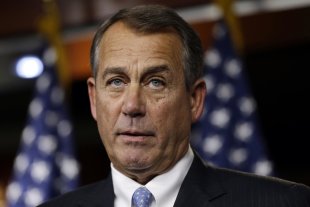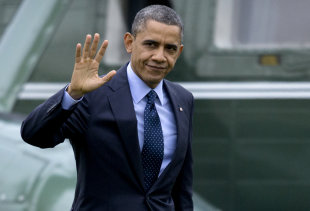NEW YORK (AP) — Peter Jackson's "The Hobbit" led the box office over the weekend with $84.6 million, a record-setting opening better than the three previous "Lord of the Rings" films.
The 3-D Middle Earth epic, the first of three planned films adapted from J.R.R. Tolkien's novel, was the biggest December opening ever, surpassing Will Smith's "I Am Legend," which opened with $77.2 million in 2007.
The top 20 movies at U.S. and Canadian theaters Friday through Sunday, followed by distribution studio, gross, number of theater locations, average receipts per location, total gross and number of weeks in release, as compiled Monday by Hollywood.com are:
1. "The Hobbit: an Unexpected Journey," Warner Bros., $84,617,303, 4,045 locations, $20,919 average, $84,617,303, one week.
2. "Rise of the Guardians," Paramount, $7,143,445, 3,387 locations, $2,109 average, $71,085,268, four weeks.
3. "Lincoln," Disney, $7,033,132, 2,285 locations, $3,078 average, $107,687,319, six weeks.
4. "Skyfall," Sony, $6,555,732, 2,924 locations, $2,242 average, $271,921,795, six weeks.
5. "Life of Pi," Fox, $5,413,066, 2,548 locations, $2,124 average, $69,572,472, four weeks.
6. "The Twilight Saga: Breaking Dawn, Part 2," Summit, $5,136,074, 3,042 locations, $1,688 average, $276,826,143, five weeks.
7. "Wreck-It Ralph," Disney, $3,216,043, 2,249 locations, $1,430 average, $168,721,592, seven weeks.
8. "Playing For Keeps," FilmDistrict, $3,146,443, 2,840 locations, $1,108 average, $10,737,535, two weeks.
9. "Red Dawn," FilmDistrict, $2,408,882, 2,250 locations, $1,071 average, $40,904,305, four weeks.
10. "Silver Linings Playbook," Weinstein Co., $2,109,274, 371 locations, $5,685 average, $16,979,323, five weeks.
11. "Flight," Paramount, $1,910,666, 1,823 locations, $1,048 average, $89,418,704, seven weeks.
12. "Argo," Warner Bros., $1,170,175, 667 locations, $1,754 average, $104,955,079, 10 weeks.
13. "Hitchcock," Fox Searchlight, $1,107,659, 561 locations, $1,974 average, $3,071,871, four weeks.
14. "Anna Karenina," Focus, $1,022,214, 409 locations, $2,499 average, $8,380,517, five weeks.
15. "Killing Them Softly," Weinstein Co., $1,008,127, 1,427 locations, $706 average, $14,140,432, three weeks.
16. "The Collection," LD Entertainment, $529,158, 621 locations, $852 average, $6,520,794, three weeks.
17. "Hyde Park On Hudson," Focus, $292,796, 36 locations, $8,133 average, $404,816, two weeks.
18. "Taken 2," Fox, $288,772, 339 locations, $852 average, $138,132,493, 11 weeks.
19. "Pitch Perfect," Universal, $245,680, 332 locations, $740 average, $63,869,423, 12 weeks.
20. "Talaash," Reliance Big Pictures, $168,828, 113 locations, $1,494 average, $2,706,375, three weeks.
___
Universal and Focus are owned by NBC Universal, a unit of Comcast Corp.; Sony, Columbia, Sony Screen Gems and Sony Pictures Classics are units of Sony Corp.; Paramount is owned by Viacom Inc.; Disney, Pixar and Marvel are owned by The Walt Disney Co.; Miramax is owned by Filmyard Holdings LLC; 20th Century Fox and Fox Searchlight are owned by News Corp.; Warner Bros. and New Line are units of Time Warner Inc.; MGM is owned by a group of former creditors including Highland Capital, Anchorage Advisors and Carl Icahn; Lionsgate is owned by Lions Gate Entertainment Corp.; IFC is owned by AMC Networks Inc.; Rogue is owned by Relativity Media LLC.




